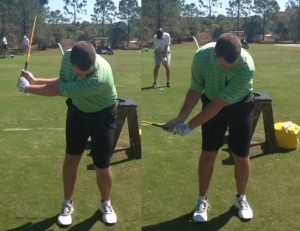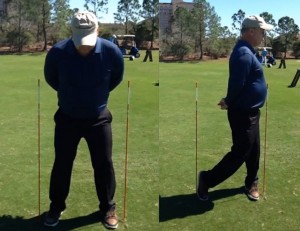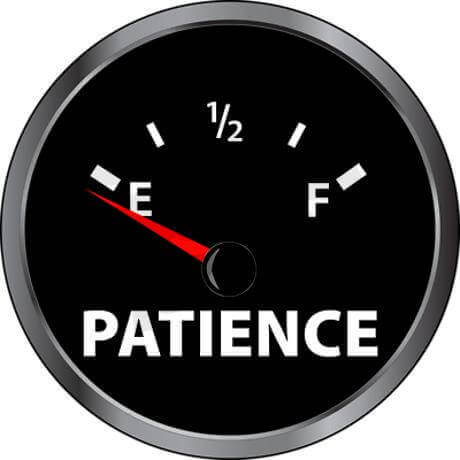Patience
I remember as a child my parents, my grandparents, and my great grandparents telling me that “Patience is a Virtue.” The statement and application of this sage wisdom related to my maturity at that time, or lack there of. As I have aged, this adage takes on new meaning everyday, especially when it comes to golf and the patience level it takes, at multiple levels, to obtain the sustained skill sets you desire.
The past few weeks I have taught a variety of age groups and skill levels. The one consistent theme I have seen within everyone I have assisted is patience. I was even asked by a client before he ever made a swing, “John, what is patience in my golf swing; can you help me with that today” Sometimes I get the best Blog Theme ideas from moments like this. So let’s explore what “Patience” means in a golf swing and provide you a couple of ideas to help you with creating better Patience you with your game.
Do You Have the Patience to Make a “Swing?”
You can define Patience within your swing multiple ways. As you complete every stroke you take, there is a question you can ask yourself to determine if you swung the club with patience,
“Did I experience an impact position that allowed for maximum distance, my desired ball flight, and allowed my swing to feel effortless?”
Based on this question alone, not many people make patient golf swings. Your impatient swings are visible not only in inconsistent distance control and accuracy, your lack of Patience I can see as a Coach I can see most often two different ways:
Patience Improvement #1 – Most golfers who come to me for assistance are trying to “hit” the ball with their hands and arms. Based upon years of experience and confirmed by video study, “hitting” a golf ball by the average golfer will most often take place prior to the club arriving at the ball. A great drill to do at the practice facility or at home is to use a slightly heavier club, bring that club to the top of your swing, and in slow motion, hold the angle you make between your front arm and the golf club, all the way down to our back leg. Called the “pump” or “Dagger” Drill, this drill provides you the opportunity to feel the delay of “hit” of the ball until the absolute last minute, when it counts.

Patience Improvement #2 – Another typical impatient move by the average golfer is the “sway.” This move was consciously intended as a rotation by the golfer but due to poor balance at set-up or during the backswing, their body slides forward toward the target or backward away from the target as the club reaches the ball. This impatient move creates an inconsistent swing center, making it impossible to consistently make a great impact position. A great way to eliminate the sway is to imagine you are rotating your body within a big barrel as you swing the golf club. You can do this without the barrel by sticking two old shafts or alignment sticks in the ground providing about 3 inches of clearance to each side. Stand in the middle of the sticks and “turn” back and through, not touching the sticks (see the video about Ed who used this to his advantage)
What Does Patience Feel Like Within a Swing?
Ask any player, of any skill level, when they think they swung with Patience and most will tell you it happens when they never felt the ball hit the club. Typically when this occurs, the golfer has allowed a rotation to happen, which in turn allows for the hands and arms to release the club at the bottom of the swing arc, exactly where the ball happens lay. A quote from Sam Snead reveals he felt patience in his swing when it felt “oily, or greasy.” What did he mean by that? A golf swing should not feel too fast or toll slow, quick or tight. Patience in your golf swing is your own interpretation of TEMPO. And you set Tempo well before you even arrive at the golf course.
Be sure to check back for some thoughts about Tempo and how Patience and Tempo go hand in hand.







